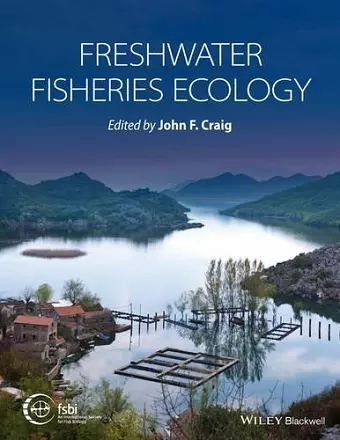Freshwater Fisheries Ecology
Format:Hardback
Publisher:John Wiley and Sons Ltd
Published:6th Nov '15
Currently unavailable, and unfortunately no date known when it will be back

Inland fisheries are vital for the livelihoods and food resources of humans worldwide but their importance is underestimated, probably because large numbers of small, local operators are involved.
Freshwater Fisheries Ecology defines what we have globally, what we are going to lose and mitigate for, and what, given the right tools, we can save. To estimate potential production, the dynamics of freshwater ecosystems (rivers, lakes and estuaries) need to be understood. These dynamics are diverse, as are the earth�s freshwater fisheries resources (from boreal to tropical regions), and these influence how fisheries are both utilized and abused. Three main types of fisheries are illustrated within the book: artisanal, commercial and recreational, and the tools which have evolved for fisheries governance and management, including assessment methods, are described.
The book also covers in detail fisheries development, providing information on improving fisheries through environmental and habitat evaluation, enhancement and rehabilitation, aquaculture, genetically modified fishes and sustainability. The book thoroughly reviews the negative impacts on fisheries including excessive harvesting, climate change, toxicology, impoundments, barriers and abstractions, non-native species and eutrophication. Finally, key areas of future research are outlined.
Freshwater Fisheries Ecology is truly a landmark publication, containing contributions from over 100 leading experts and supported by the Fisheries Society of the British Isles. The global approach makes this book essential reading for fish biologists, fisheries scientists and ecologists and upper level students in these disciplines. Libraries in all universities and research establishments where biological and fisheries sciences are studied and taught should have multiple copies of this hugely valuable resource.
About the Editor
John Craig is Editor-in-Chief of the Journal of Fish Biology and has an enormous range of expertise and a wealth of knowledge of freshwater fishes and their ecology, having studied them around the globe, including in Asia, North America, Africa, the Middle East and Europe. His particular interests have been in population dynamics and life history strategies. He is a Fellow of the Linnean Society of London and the Royal Society of Biology.
"As a former publisher, I feel able to suggest thatthose who write the blurbs that appear on book covers
are sometimes prone to hyperbole when they claim that the content therein represents a ‘landmark publication’, worth every penny of the eighty quid they want you to part with to own a printed copy. But as a thwarted fisheries ecologist, I’d happily agree with whoever made that claim for this book, and not just because at 900 pages and 2.7kg it fits both possible definitions of the term landmark, being simultaneously ‘an object recognizable from a distance’ as well as ‘an event marking a stage or important turning point’.
Trying to provide a comprehensive account of inland fisheries worldwide is a daunting task, one that could not sensibly be tackled by a single author, or even a small group. You need a big international team, recruited and guided by someone with experience of fisheries in different climates and cultures, able to identify and bring together a diverse collection of authors, capable of encouraging them to write contributions to meet a common aim rather than to their own agenda, and someone with the ability to edit many contributions into a coherent whole. Persuading John Craig to take on the role was a masterstroke; the longserving editor of the Journal of Fish Biology has the perfect meld of research experience, editorial expertise and familiarity with the writing skills of the population of fisheries scientists. The result is a book drawing together the expertise of over 100 high-calibre contributors that works as a coherent whole, and as a resource likely to stand the test of time. Contributions of varying length are grouped together in eight sections, on topics such as the basics of freshwater ecosystems; freshwater resources of fisheries by geographical region; fishing operations; fishery management; fisheries development; the effects of perturbations; and a final section on future developments.
No volume of this type is ever going to be perfect and there are doubtless a few gaps and inconsistencies in the coverage. But the flaws are utterly trivial compared to the strengths, and if I were still an aspiring young fish biologist, or an academic freshwater biologist, a fisheries manager or consultant, I wouldn’t hesitate to buy my own copy. I know, I know, eighty pounds for a book makes the eyes water, but you can get a guided tour of the whole world of fisheries ecology for trivially more than the cost of renewing a UK passport. The book will last you at least as long and make much more interesting reading". (BES Bulletin Vol 48:3 September 2017)
ISBN: 9781118394427
Dimensions: 285mm x 224mm x 46mm
Weight: 2735g
920 pages